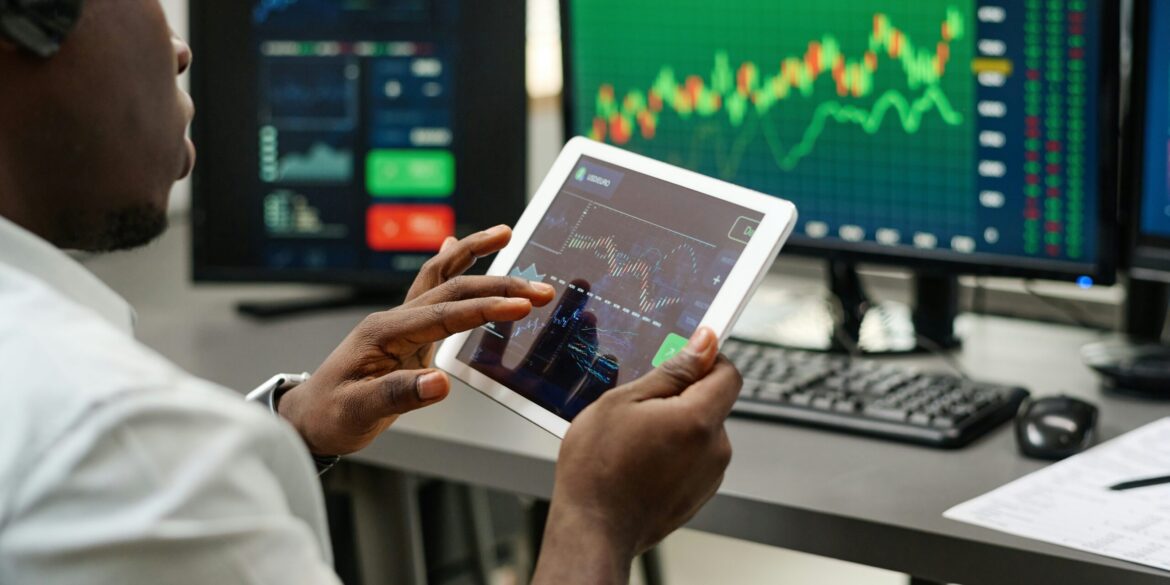U.S. stock markets climbed to new heights on August 23, lifted by blockbuster earnings from the nation’s largest technology firms and unwavering investor optimism surrounding artificial intelligence. The rally capped a strong month for Wall Street, with the S&P 500, Nasdaq Composite, and Dow Jones Industrial Average all closing at record levels. The surge reaffirmed the central role of artificial intelligence in shaping market sentiment, driving innovation, and defining the financial landscape of 2025.
At the center of this rally was a wave of earnings reports that exceeded Wall Street expectations. Nvidia, the semiconductor powerhouse whose chips underpin much of today’s AI development, continued its astonishing growth trajectory. Analysts highlighted that demand for Nvidia’s processors remains insatiable, with businesses across industries—from cloud computing to healthcare and autonomous vehicles—adopting AI at an unprecedented scale. The company’s quarterly revenues and profits shattered previous highs, underscoring its dominance in the sector. Other mega-cap technology firms, including Microsoft, Apple, Amazon, and Meta Platforms, also reported strong results, each emphasizing their strategic investments in AI and cloud infrastructure as a key driver of future growth.
The rally was bolstered further by expectations that the Federal Reserve may take a more accommodative stance in the months ahead. Investors responded positively to recent comments from Fed Chair Jerome Powell, which suggested that interest rate cuts could be on the horizon if inflation continues to moderate. This dovish outlook gave additional momentum to equities, particularly growth stocks that are most sensitive to borrowing costs. Analysts noted that the combination of robust earnings and a supportive monetary policy environment has created the perfect conditions for the market’s late-summer surge.
Yet beneath the surface of the rally lies a persistent caution. Market strategists have warned that much of the current momentum is concentrated in a relatively small group of mega-cap companies. While the so-called “Magnificent Seven” tech giants delivered double-digit earnings growth in the second quarter, the broader S&P 500 showed only modest gains. This concentration raises concerns about the sustainability of the rally, as any slowdown in earnings or disruption in the technology sector could have an outsized impact on overall market performance. Some analysts have also expressed unease over stretched valuations, pointing out that price-to-earnings ratios in the technology sector have climbed to levels not seen since the dot-com era.
Despite these risks, investor enthusiasm remains strong. Global investment banks, including UBS, have raised their year-end forecasts for the S&P 500, citing continued strength in AI adoption and resilient corporate profits. Strategists argue that artificial intelligence has moved beyond the realm of hype, becoming a tangible driver of productivity gains and revenue growth. From financial services to logistics and pharmaceuticals, companies are rapidly integrating AI tools, reshaping industries and creating new business opportunities. As a result, investors appear confident that AI-driven growth will extend well into 2026 and beyond.
The rally has also underscored the United States’ leadership in technology and innovation. American firms remain at the forefront of AI development, attracting both domestic and international capital flows. This leadership position has proven particularly significant in the face of ongoing geopolitical uncertainty, with trade tensions and regulatory debates continuing to shape the global investment environment. For now, however, the dominance of U.S. technology companies has reassured markets that the sector can weather external challenges while maintaining its growth trajectory.
As August draws to a close, Wall Street finds itself in a moment of both triumph and reflection. Investors celebrate record-breaking indices and the transformative power of AI, yet many also acknowledge the fragility of a rally built so heavily on a handful of corporate titans. Whether the momentum will broaden across other sectors remains uncertain, but what is clear is that artificial intelligence has established itself as the cornerstone of modern market growth.
For everyday investors, the message is both encouraging and sobering. AI continues to unlock extraordinary opportunities, and the companies leading the charge have delivered substantial rewards to shareholders. At the same time, vigilance is warranted. Concentrated leadership leaves markets vulnerable to sudden shifts, and the balance between innovation-driven optimism and the realities of economic cycles remains delicate.
August 23 will be remembered as another milestone in the tech-led market rally of 2025. The date not only marked record highs for America’s major indices but also highlighted a broader truth: artificial intelligence is no longer a speculative promise, but a financial engine reshaping the global economy. With AI at the forefront of innovation, investors now look ahead to the coming months with a mixture of excitement, caution, and anticipation.


